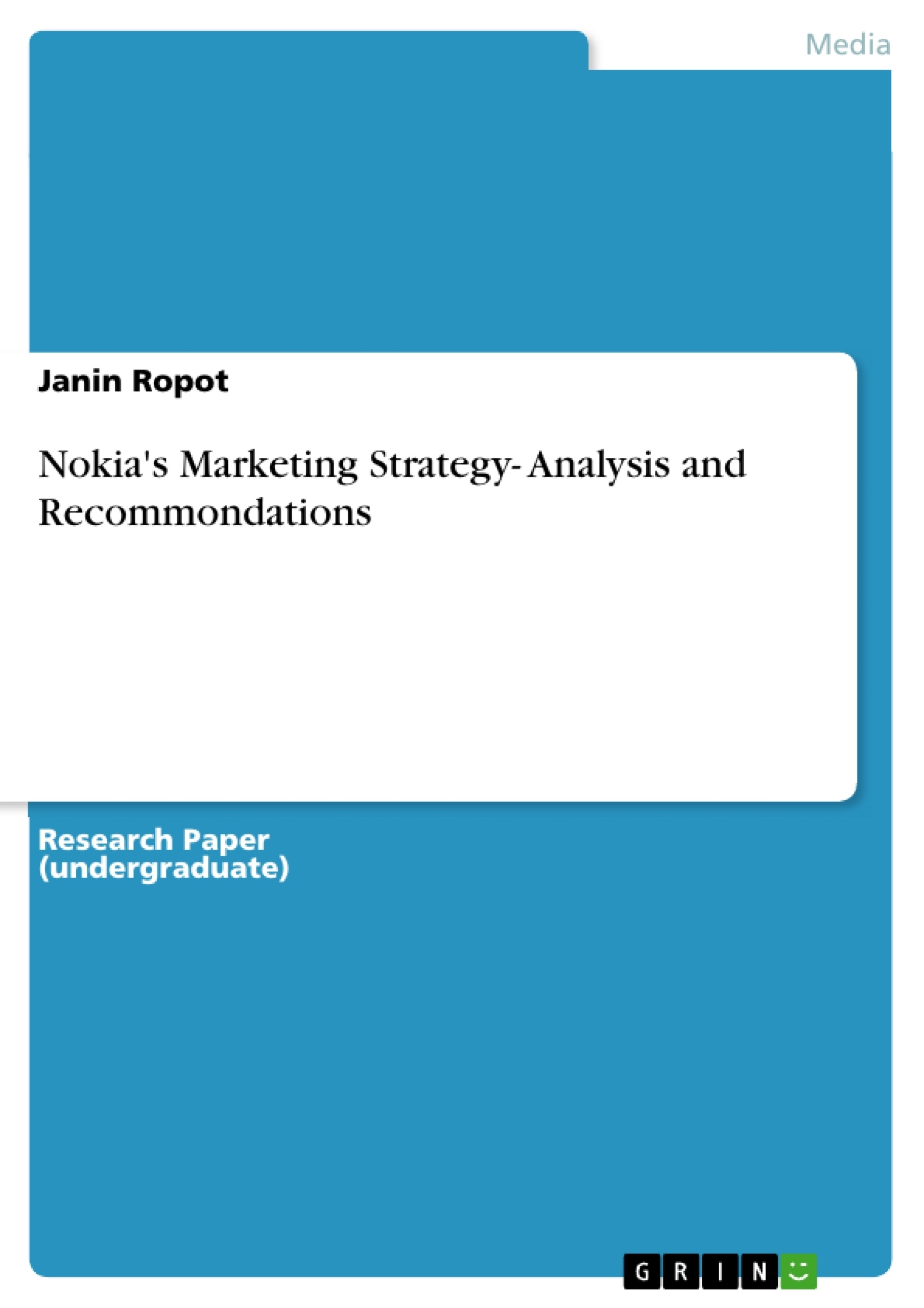This report is to provide a theoretical framework analysis of Nokia’s current marketing strategy amid the hypercompetitive smartphone segment on the German market. In order to analyse the external and internal influences, this report commences with the PESTLE and SWOT analyses and evaluates Nokia’s competitive advantages. It is going to provide an
in-depth description of a segmentation analysis, targeting and positioning strategies. In the second part of the report the reader will achieve understanding on Nokia’s chances to maintain their brand relevance to their target group. This is followed by recommendations on how to improve the current marketing situation and an overview of Nokia’s alternative strategic approach along with the resources and capabilities they require for increasing their market share, profitability and value creation. The main conclusions made in this report are to highlight the main range of products and the constantly altering product names, which is done to make products appeal more familiar to consumers. The second scenario suggests going a different way by inventing a control panel for household appliances. The research for the analysis comprises of a qualitative approach based on industry experts, internal documentation such as Nokia’s financial statements, market reports and public announcements relevant to the marketing strategy.
Table of Contents
- INTRODUCTION
- Current Situation
- SITUATION ANALYSIS - CURRENT STRATEGIES
- PESTLE-ANALYSIS
- SWOT ANALYSIS
- SEGMENTATION, TARGETING AND POSITIONING
- SEGMENTATION
- TARGETING
- POSITIONING
- DIFFERENTIAL ADVANTAGE/ COMPETITIVE EDGE
- Recommendations
- SMART
- RECOMMENDED MARKETING STRATEGIES
- CONCLUSION
- REFERENCING LIST
- APPENDIX
- PESTLE ANALYSE
- CONSUMER GROUPS NOKIA
- SEGMENTATION ANALYSIS-NOKIA LUMIA & NOKIA E SERIES
- CUSTOMER TARGETING - Three STRATEGIES
- NOKIA LUMIA 900- SAMSUNG GALAXY S3
- IMPLEMENTATION SCHEDULE
- MARKETING MIX - CONTROL PANEL
Objectives and Key Themes
This report analyzes Nokia's current marketing strategy in the highly competitive German smartphone market. The report examines external and internal influences using PESTLE and SWOT analyses, and evaluates Nokia's competitive advantages. It then explores Nokia's chances of maintaining brand relevance among their target audience. The report concludes with recommendations for improving Nokia's marketing strategy and proposes alternative strategic approaches for increasing market share, profitability, and value creation.
- Nokia's marketing strategy in the German smartphone market
- External and internal influences on Nokia's marketing strategy
- Nokia's competitive advantages and challenges
- Maintaining brand relevance among target consumers
- Recommendations for improving Nokia's marketing strategy and achieving growth
Chapter Summaries
The report begins with an introduction that highlights the competitive landscape of the mobile phone market, emphasizing the shift towards smartphones. It explores Nokia's historical dominance and their recent struggles in this evolving market. The report then delves into a detailed analysis of Nokia's current marketing strategy, utilizing PESTLE and SWOT frameworks to assess external and internal factors influencing the company's performance. This analysis includes an in-depth examination of segmentation, targeting, and positioning strategies employed by Nokia.
The report concludes by providing recommendations for improving Nokia's marketing strategy, encompassing a range of tactics designed to enhance their competitive position. These recommendations cover areas such as product development, brand positioning, and customer engagement. The report also explores alternative strategic approaches that Nokia could pursue to regain market share and achieve sustainable growth.
Keywords
This report focuses on Nokia's marketing strategy in the German smartphone market, exploring key concepts such as PESTLE and SWOT analysis, segmentation, targeting, positioning, competitive advantage, brand relevance, and market share. It also examines strategies for improving marketing effectiveness and achieving sustainable growth in the highly competitive smartphone industry.
- Quote paper
- Janin Ropot (Author), 2013, Nokia's Marketing Strategy- Analysis and Recommondations, Munich, GRIN Verlag, https://www.grin.com/document/263916




